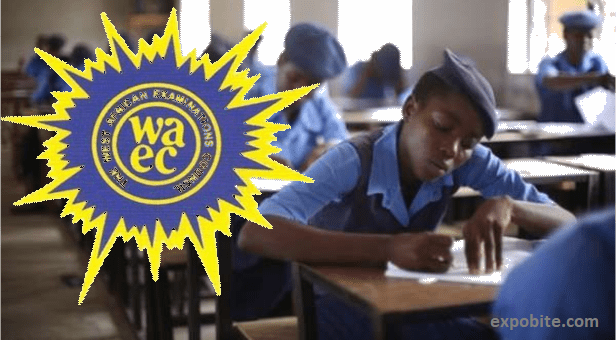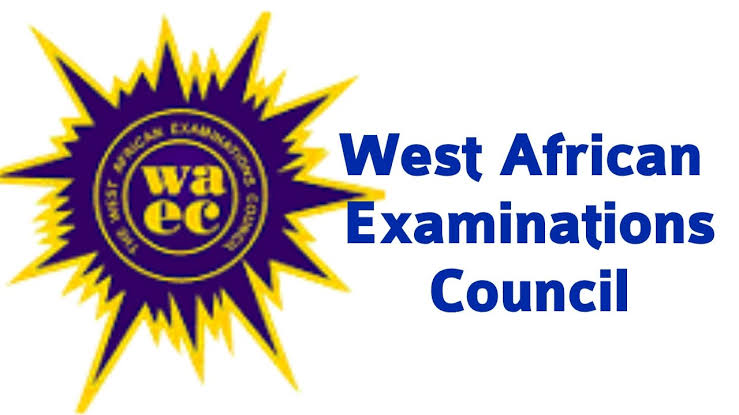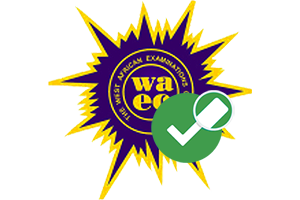Waec Yoruba 2022 Answers for 1st June
Waec Yoruba Answers 2022: Let me send you 100% verified and correct Waec Yoruba Answers 2022 for the 1st of June 2022 directly to your mobile phone, via WhatsApp, SMS, or through our website expobite.net/answer page.
YORUBA- OBJ ANSWERS ANSWERS-Examking.Net
(1)
Oja je ibi ti karakata ti ma n sele. Awon ti won ni oun jije tabi oun eelo yoo gbe won wa si oja, awon ni a npe ni oloja. Bee ni awon ara ilu ati enikeni ti o ba fera oja yoo wa si inu oja lati wara.
Oruko oja to wa ni ilu mi ni oja Irede, oruko ilu mi ni Awade . O wa lara awon ilu ti a kopo si abe Egbado ti a tun pe ni Yewa. Orisirisi awon oja miiran tun wa ni ilu wa. Awon naa ni oja ita oba, oja sawonjo, oja ilusa ati bee beelo.
Ojo karunkarun ni won maa nna ja Irede. Aarin ilu Awade ni oja naa wa. Oba Ajelanwa ni itan sope o da oja naa sile nibi Ogorun odun seyin. Inu oja yinaa ni idiko awon onimoto wa. Moto to lo si orisi ilu ni o wa nibe. Nibe naa ni awon moto tii won ngbe oja wa lati igberiko, lati wa se oro aje ninu oja nla.
Niso niso ni awon oja naa wa. Biriki ni won sifi ko awon iso towa ninu oja naa. Biso alata sewa ni iso oni gaari wa. Awon iso miiran ni: Elelubo, alagbo,onisu,elepo ati bee beelo. Iso kookan ni o si ni olori iso. Gbogbo oja si ni iya loja ati awon alakoso ati oloye oja.
Oja yii je oja to gbajumo, to si je ilumoka kaakiri ile Yoruba. Enikeni to ba feera gaari, epo tabi egusi ledinwo mo wi pe oja Irede ni o ye ki awon ti rii ra. kosi alajapa kan ti yoo so pe oun o mo Irede. Ti kii ba se ti oja yi ni ko se ni ti yo mo ilu wa. Oja yii lo je ki amo agbegbe naa. Oja yi lo fun ilu yi lokiki. Oun lo je ki ilu naa ni asaaju nile igbimo asofin. Oun naa lo mu ki eto mayederun ijoba fi de odo ti won naa.
Nitori oja yii se pataki fun eto oro aje ipinle Ogun ati ibile ariwa Yewa. Ijoba ti ba won da oda si opolopo ona ti o wo oja naa. Ilu Awade funrare si ngbadun ina ijoba. Omi igbalode wa fun won. Ijoba si fun won ni ile eko alakobere ati ti girama.
Awon asaaju oja Irede naa sin se bebe. Won ni awon owo oja ati iso ti won maa ngba lowo awon oloja. Eleyii ni won fin tun oja yii se. Won kii duro de igba ti ijoba to wa bawon da soro ki won to gbe igbese lori re. Owo yi ni won fi nsanwo awon agbale oja ati awon olode. Ninu re naa, won a yo ti awon oloye oja ati t’ Oba ati awon ijoye won, ninu re naa ni won tin se awon etutu ati awon asa isembaye to ba ye ki won se.
Bi eniyan yoo wa raja ni oja Irede, o gbodo jiwa ni. Afemojumo loja. Nigba yii, eeyan yoo ri oja ra lopo. Owo eni ni oja ni eniyan yoo ti ra ledinwo. Sugbon ti ile ba ti nmo ki eniyan to wara oja, yoo ti ma dowo awon alarobo ti won a ra lati tunta. Awon wonyii yoo ra ledinwo lowo oni nkan won awa gbe owo lee lati tun ta.
Isoro akoko ti mo ri wi pe oja yi ni ni pe, bi won se da oda si awon ona ti o wonu oja yi to, ko si oda ninu oja yii, ti ojo bawa ro ni ki ewa wo arisa oja yi. Erofo yoo ti poju. Awon oko yoo ma wa ri wole. Eleyii kobo ju mu, ki ijoba bawa tun ona inu oja yi se.
Isoro keji ni wi pe, bi eniyan bara oja sile. Ibaaje oja sile meji, awon kan bi egbe omo oni moto yoo de lati wa gba owo lori oja te e ko si le. Iye ti won si maa ngba maa nju tabi ko fere to iye teeyan fira oja yen nigba miran lo. Osi da miloju wi pe kii se gbogbo owo ti won ngba yii lo nde odo ijoba.
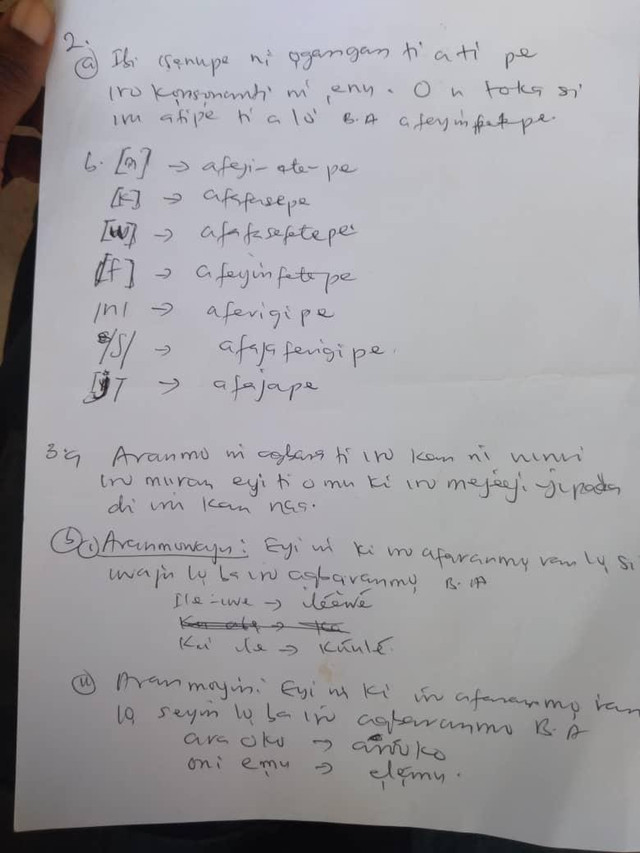
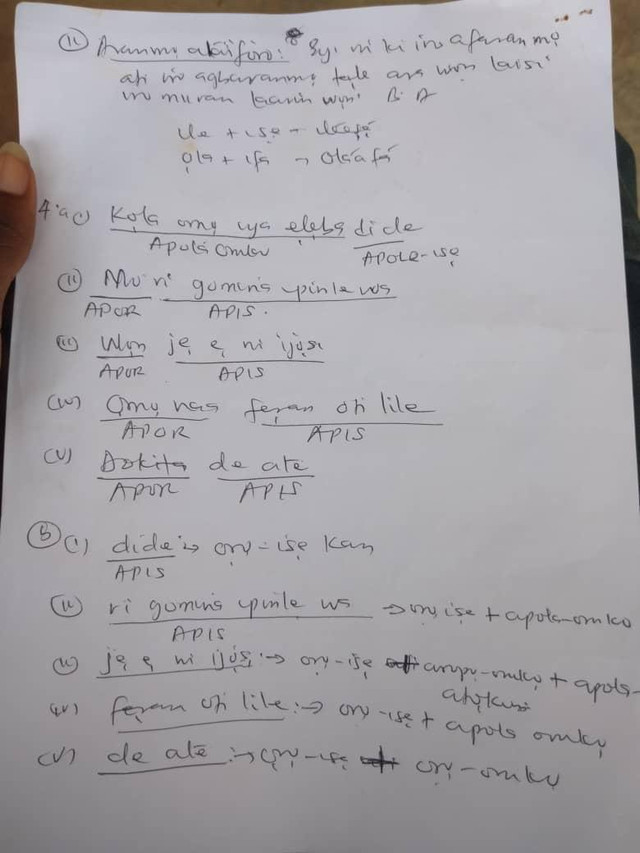
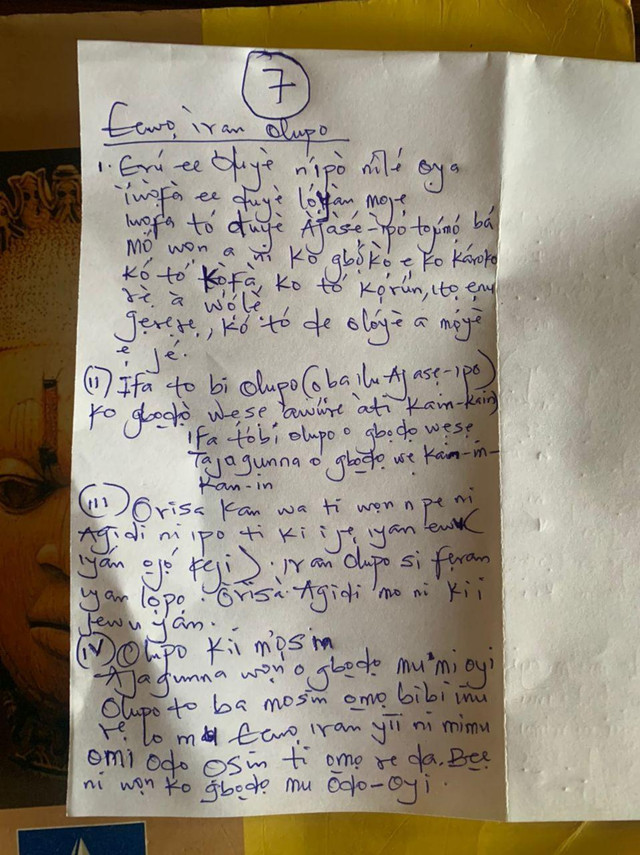
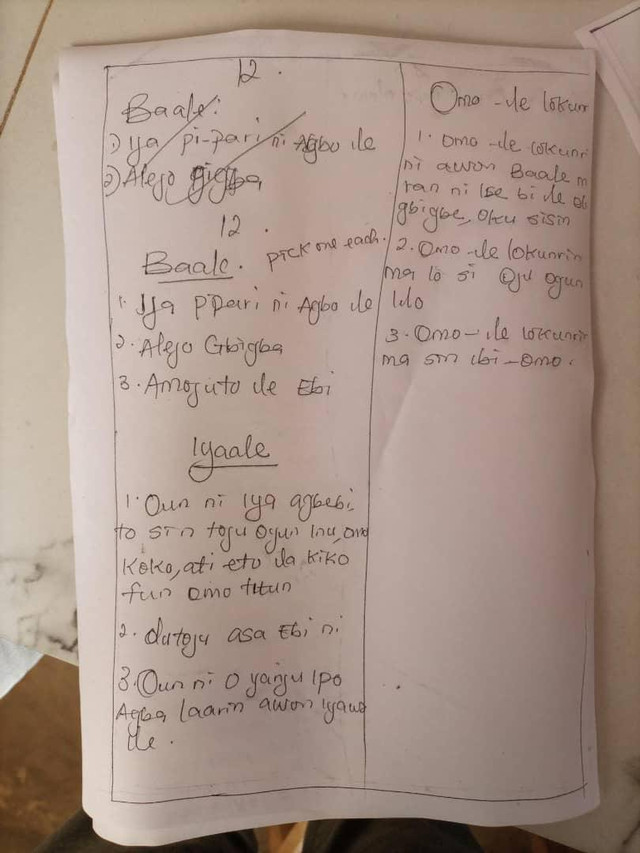
===================
Here are the objective and essay answers for Waec 2022 May/June examination, Yoruba is one of the underrated subjects in the Waec examination, but believe me, to pass and get an A in this particular subject is not really easy unless you are ready to take the necessary steps, and I think you landed on this page because you want to seek for Waec Yoruba exam help.
Expobite is the most trusted website out there on the internet and the best place to get Waec Yoruba questions and answers for the year 2022.
Are you a teacher, a student, a school owner, or do you manage an exam center and you want your candidates to make an A in this particular subject? subscribe with us right now without wasting time, the exam is about to start, and we will send you the 100% verified questions and answers for Waec 2022 Yoruba examination.
Waec Yoruba Questions and Answers 2022
Most times, people do ask me on WhatsApp if I can send them the questions along with the answers, and my answer is always “YES WE DO”, we do send questions and answers to our candidates unlike other sources that do send just answers and most times their answers turns out to be wrong, we will be sending you the 100% verified correct Waec Yoruba answers 2022 directly to your mobile phone, through WhatsApp, text message or via Expobite answer page.
Waec Yoruba 2022 Exam Date
The Waec Yoruba 2022 examination has been scheduled to hold on Wednesday 1st May 2022 from 2:00 pm to 5:00 pm for both essay and objective.
| Paper | Start Time | End Time |
|---|---|---|
| Yoruba 2 (Essay) | 2:00pm | 4:00pm |
| Yoruba 1 (Objective) | 4:00pm | 5:00pm |
Countdown to Yoruba Exam 2022
Below shows the time remaining for the exam to start, I don’t think you still have enough time
Subscribe with us now let’s help you pass this exam, this is one of the most important subjects as a Waec candidate, and failing it nullifies all other subjects you have written and are about to write.
Waec Yoruba Runz 2022 Expo
Do you want to score an A in this 2022 Waec TD exam? then Expobite is just the right source for you to achieve this with ease, our track record speaks for us, for years now we have been into this, and we haven’t received single bad news at all of a failed candidate, unless for schools that their papers are canceled/withheld, I believe that’s a general issue from the school, it has nothing to do with us.
Below, we will show you how to subscribe with us so that we can send you the correct answers for your Waec Yoruba exam.
How to Subscribe and Get Questions and Answers for Waec Yoruba 3hrs Before the Exam
We have 3 methods of sending answers which you need to choose from and they are as follows:
| METHOD | PRICE |
|---|---|
| Pin/Password | ₦500 MTN Card |
| Direct WhatsApp | ₦600 MTN Card |
| Direct SMS | ₦1,500 MTN Card |
How to Subscribe for Waec Yoruba Runz 2022 Using MTN Recharge Cards
- Choose your preferred answer delivery method.
- Buy an MTN card worth that amount (we accept 100, 200, 500, and 1000 MTN recharge cards)
- Type the recharge pins, subject, and answer delivery method you choose in a text message and send to 07062154881, eg. 623389393836329023, 634634930959858595, 0848746639287363, 35637372892848463, Yoruba, WhatsApp, then send to 07062154881.
- Now we will load the recharge cards, then add you to the Yoruba VIP WhatsApp group where we will send all the correct verified answers 3hrs before the exam starts, if you choose PIN, we will send you a 3digits PIN to unlock the Expobite Answer page where you will see the answers too before the exam starts.
How to Subscribe for Waec Yoruba Runz 2022 Through Bank Transfer
Yes, we accept bank transfers of MTN airtime, if you have a bank account you can as well recharge us from your bank, then send a payment screenshot to us on WhatsApp at 07062154881, then send us your subject, and we will add you to the VIP answer group immediately.
How Can I Trust Expobite? This Is My First Time
Yes, I understand your fear, yes there are many scam exam sites online, and because of this, you just need to be careful, but I give you my word, Expobite is very trusted, we have been in this business for 4years now and we are not ready to trade our hard-earned reputation for anything.
Below is just a screenshot of the Marketing exam answers of 17th May 2022 we sent to our WhatsApp VIP group for our VIP candidates in 2022:

Hello, welcome to the Expobite Waec exam help center.
The Waec 2022 examination started on the 9th of May 2022.
Waec examination is tough and I know you wouldn’t like to still wear your secondary school uniform next year to rewrite Waec, that would be a very shameful thing.
Don’t make this very big mistake, a wrong decision you make now can make you rewrite Waec next year, we are here to help you pass your Waec examination once and for all at a very low price.
Are you a Waec 2022 candidate wishing to score A’s in the ongoing Waec examination? Then rush now and subscribe to our legit Waec 2022 exam help/runz expo before it’s too late.
Our Price List for 2022 Waec Runz
- Waec Runz for Science Students: ₦6,000 for 9 subjects including practicals.
- Waec Runz for Art Students: ₦6,000 for 9 subjects.
- Waec Runz for Commercial Students: ₦6,000 for 9 subjects
- Waec Runz Per Subject: ₦600, ENGLISH, and MATHS ₦1000 each.
- Waec Runz Per Practical: ₦500 per practical.
🔥 We Send All Questions and Answers 3hrs Before the Exam 🔥
PAYMENT METHOD: MTN recharge card/bank airtime transfer.
You can send the recharge pins via SMS or transfer the airtime to 07062154881
All answers will be sent to you via our VIP WhatsApp group.
You will be added to our VIP group immediately after you subscribe.
😃 SUBSCRIPTION IS ONGOING.
Subscribe now before it’s too late.
Past Yoruba Questions and Answers Provided by Expobite
We have been in this since 2014 till date and all these years we have been providing exam candidates with the correct answers to all their exams, below, I will be sharing with you answers from past exams posted here on Expobite.net:
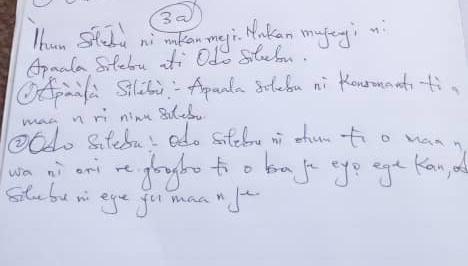

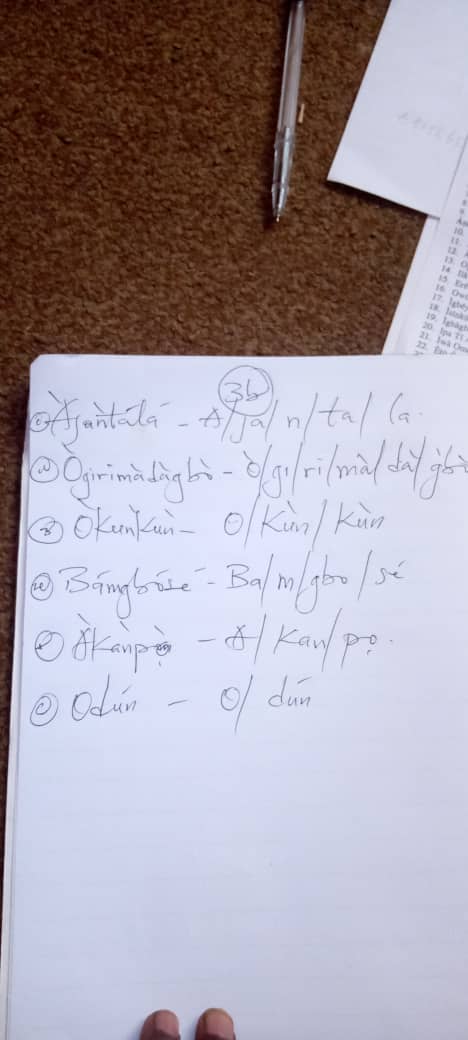
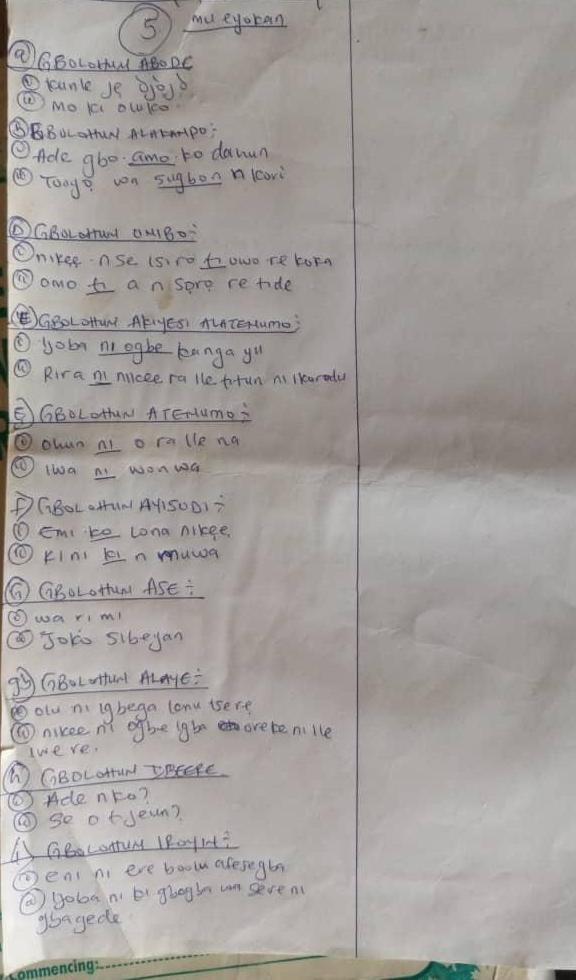

YORUBA OBJ:
1-10: BACDDDBDAA
11-20: ABDDCBCABD
21-30: DAACDABBBA
31-40: ABCCDDABCB
41-50: ACCBBBCCAD
51-60: DAADBCCADB
====================================
(3)
(i) moyọ̀sorẹ̀ – mo yọ sí orẹ (í)
(ii) idikọ – ìdí ọkọ̀(ọ)
(iii) jẹsẹ – jẹ̀ isé (i)
(iv) etido – eti odò
YORUBA-ANSWERS
(1d)
Aroko Lori igi Owo (Igi Ope)
Igi ope je igi ti Olorun yo nu si pupo julo fun iwulo omo eniyan pelu iwulo fun eranko inu Igbo ni Pataki julo igi ope je igi ti a gbin ni ile Yoruba Pataki julo ni orile ede Naijiria, ati ile Afirika, ki awon oyinbo alawo fun fun to mu eso ope ti amo si eyin losi ilu oyinbo bi Burasili, Ile Larubawa, ile mexico, ile Amerika, ati awon ile oyinbo, ti ako le daruko tan aimoye egberun odun seyin ni igi ope ti wa ti alepe ni igi aba laiye
IGI OPE: Igi ope ama pe laiye gege bi omo eniyan se ma unpe laiye orisirisi igi ope ni owa ope miran ma un lo ogorun odun laiye tabi jubelo igi ope agbon maun lo to ogorin odun laiye tabi jubelo ti ope ba pe laiye tan ti igi ope naa ba ku awon eranko mi ran ma un fi inu igo igi ope se Ile eranko bi okete, okere, ejo, ekute, kokoro, bi ogoungo, oyin, ti otun ma wulo fun eranko ati eda eniyan
ERANKO: Eranko awon eranko pupo loma unje eyin gegebi ounje oojo won fun apere eranko bi okere, oya, okete, ati awon orisirisi eye ati awon eranko miran ti akole daruko won tan
AJE: Aje walara ope ti otiku ti ale fiwe iha aje yi ni won maunlo latifi yin ibon pelu eroja bi ahaya, etu, aje, won awaki daradara pelu opa ibon won ski aje naa daradara ki won to me yin ibon naa fun eranko tabi fipa oun koun
YIYO EYIN: Yiyo eyin kuro lara soo so
SOO SO: Soo so je ile ti eyin maun wa ni nure sugbon olewu pupo nitoripe soo so le gun eniyan ni owo tabi ese ki owo naa si ma se eje tabi ibi kibi ti oba ti gun eniyan lara awon elomiran tun maun lo soo so fun ogun lilo
EKU: Eku ni ibiti won ti maun se epo pupa ninu gorodomu ni unla ti eyin ba ti jinna tan won agun ninu koto ti won unpe ni eku ibe ni won ti mayo epo pupa loto, ekuro, iha, ikete ti won ma fiunje isu sise tabi isu yiyan
IGI OPE : Je igi ti o ma un so eso Pataki ti o bati dagba tan eso naa le wulo lorisi risi ona
IMON: Imon je ewe ope ti won ma unlo lati fiko ile keke bi ahere, atibaba, tiama unlo ni laiye ojoun ni unkan bi odun 1850, odun 1950, odun 1960 ati odun 1970, ni igbayen ni awa ni ilewe alakobere imon ni ama unfiko kilasi ati atibaba ti won ti awon eniyan pataki ti maunjoko ti won baunse ayeye awon eniyan bi Oba ilu, ijoye, olori ile eko, ati awon oluko ile iwe olori esin bi esin islam, esin kirisiteni, imon yi naa ni won tun maunlo fun opolopo ere idaraya
wo oremi Olorun Oba da unkan lorisirisi fun anunfani awa eda eniyan ti won ba fi igi ope we eniyan oma dara pupo toripe kosi eya ara ope ti kowulo ki Olorun Oba Olojo oni jeki aiye wa dara ju aiye igi ope lo.
====================================
(1e)
ISELE LAABI KAN TO SOJU MI
Ijanba ina kan ti o sele loju mi waye ni ojo kerinla osu keji odun 2013. O wa ye ninu soobu kan ni alaguntan, iyana ipaja. Soobu yi ko jina siibi ti ise mi wa. Soobu naa wa ni abe ile alaja meta ti o do ju ko ilepo mobili ni alaguntan.
Ninu soobu yi foomu ibusun niwon nta nibe ti won npe ni matiraasi. Oja yii si kun inu soobu yi biba. Gbogbo ita soobu naa ni foomu naa wa. Omoyibo kan ni oni soobu naa. Ni ojo ti isele laabi yi sele, nkan kekere ni o fa sababi. Eeyan kan wa ti o sese gba soobu tire legbe soobu oni foomu yi. O wa pe awon ajorin, weda lati wa ba a jo awon irin kan po ninu soobu naa. Soobu tuntun yi ati ti onifoomu si fegbe kan arawon ni.
Bi ogbeni weda se n ba ise jorin jorin re lo, ina weda n se yo, o nta jade bo tin sise naa. Lai mo wipe ina na ti ta ba okan lara awon foomu to wa legbe soobu naa. Ko se ni to tete kofiri nkankan. Nigba to maa fi to ogun iseju opolopo foomu ti lana ninu soobu lohun. Eefin ti bole. Ina tinso laulau la be dekini. Eefin nlanla ti bo gbogbo ile alaja meta naa. Awon eniyan tin sa kijokijo. Ariwo tin so.
Ese ero tipe jo, awon eniyan ti n gbiyanju orisirisi nkan lati pa ina na. olomi ti nda omi, olose tin da ose si nu ina na, awon to ni agolo iyefun panapana gbe ti won jade won tee sinu ina yi sugbon kaka ko san lara iya aje ina yi, pipele lo n pele sii. Laipe ina na ti ran awon soobu to wa legbe ibe.
Nigba tii wahala ina yii maa fi bere ogbeni weda ti pari ise, ko mo nkankan to sele, nigbatii won lo pe de, to yo lookan, to ri ina to nbinu laulau, baba yi daku lo gborangandan ni o. Won ro mi lee lori kotoo ji ni o.
Adura mi ni wi pe oluwa ko ni je kari iru isele laabi yi mo. Imoran mi fun awon onise owo paa paa julo awon ti o nlo ina ninu won, ni wi pe ki won tun bo maa kiyesi sara. A o ni ri ja ina o. ki awon oni soobu maa ri wi pe won pa gbogbo ina soobu ki won to o ma lo sile.
====================================
(12)
(a) Agbalagba – Àgbàyín Àdalẹ́
(b) Eni ti o dun – E kú Ìdúró
(D) Awọn ti o se igade lọwọ
(ẹ) Eniti o fe woolu – E káá bọ̀
(f) Eniti o ṢeṢe bimọ – E kú ọwọ́ lomi
(g) Eni ti ologun Sinu –
(gbe) Eniti yamba Selu Si – A Koo nituru rẹmọọ
(h)Eniti o pe o lati wa jeun – A gbabi re
(i)Eniti o wa ni ipo ola –
====================================
(4)
(a) Wànálà – ọ̀rọ̀ orúkọ
(b) Mo – Ọ̀rọ̀ arọ́pọ̀ orúkọ
(d) Wàhálà – ọ̀rọ̀ orúkọ
(E) ÀVLON – Ọ̀rọ̀ Arọ́pọ̀ afarajórúkọ
(F) ÌBÀDÀN – Ọ̀rọ̀ Ọ̀rúkọ
(G) PUPA – Ọ̀rọ̀ Àpèjúwe
(gb) Ní – Ọ̄rọ̀ Atókùn
(h) Sùgbọ̀n – Ọ̀rọ̀ Àsupò
(I) Wa – Ọ̀rọ̀ ìse
====================================
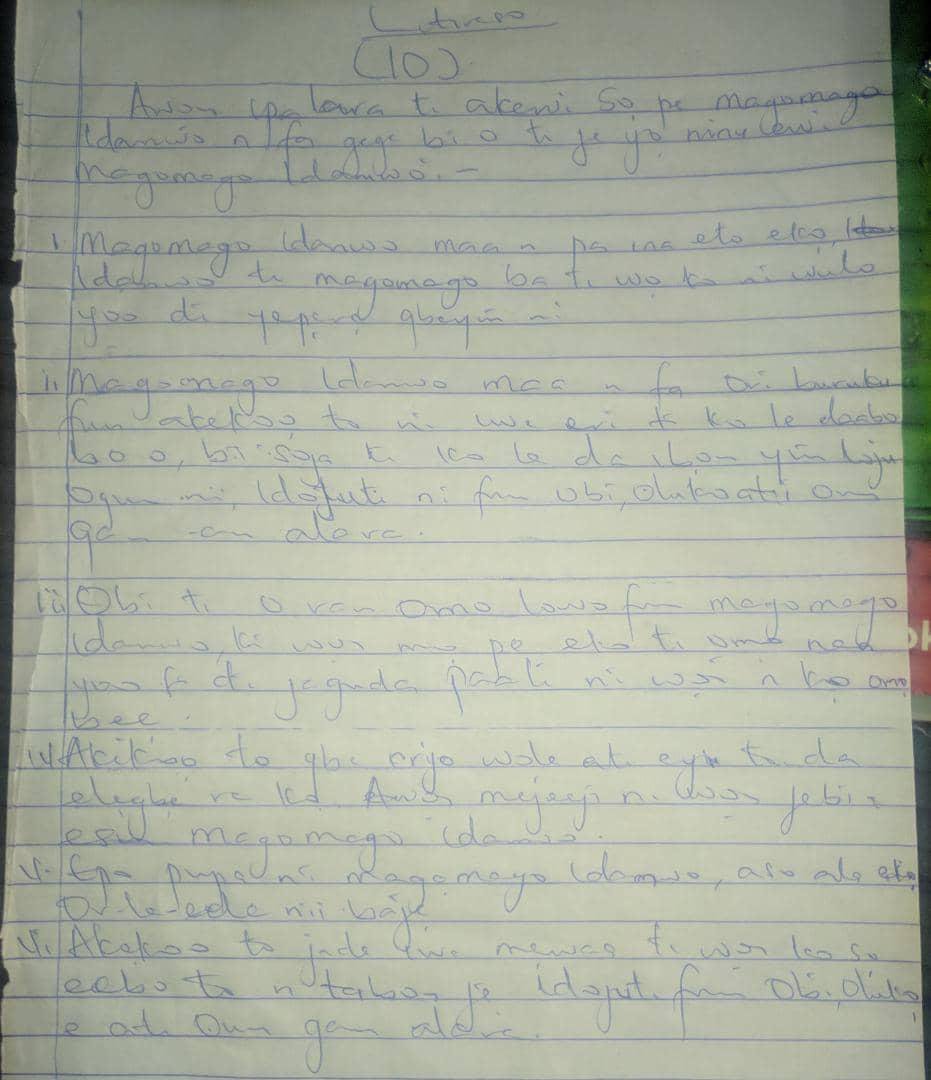
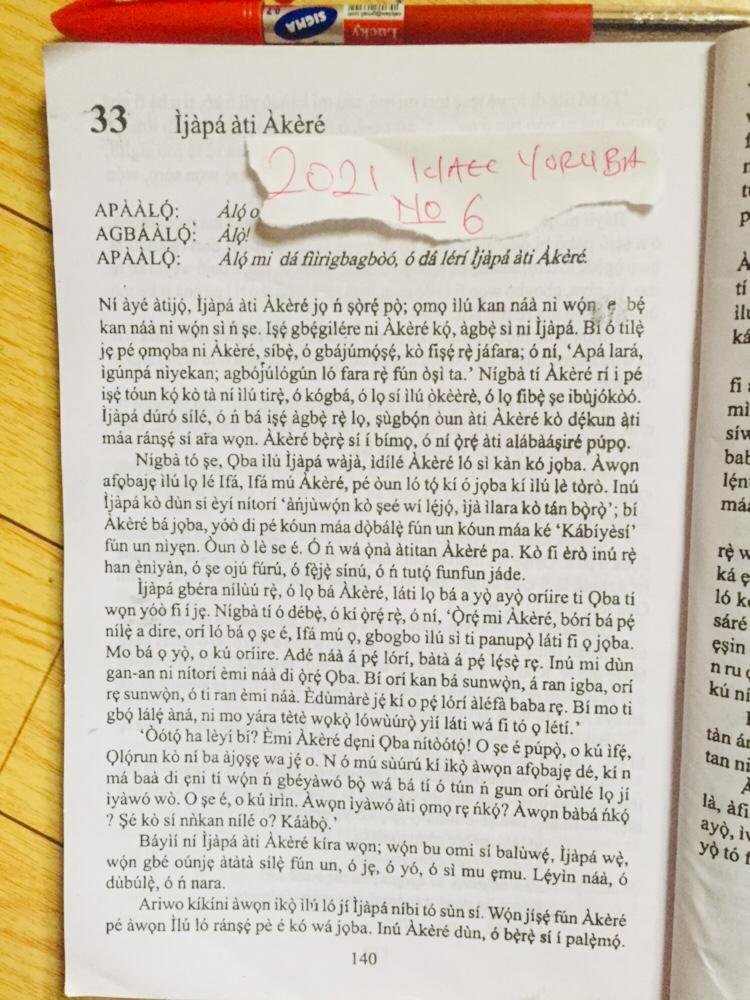
HISTORY OBJ
01-10: AACCCCCBDA
11-20: BBAAAAAADD
21-30: DDDDDCACBB
More coming
HISTORY ESSAY
SECTION A
(2)
(i) Subsistence and Commercial Activities:
Agriculture is the main economic activity. Grain is the staple diet, including Guinea corn, millet, maize, and rice. The Hausa also grow and eat root crops and a variety of vegetables. Cotton and peanuts are processed and used locally, but part of the harvest is exported. The Hausa practice intercropping and double-cropping; their main implement is the hoe.
(ii) Industrial Arts:
There are full-time specialists only where there is an assured market for craft products. Men’s crafts include tanning, leatherworking, saddling, weaving, dying, woodworking, and smithing. Iron has been mined, smelted, and worked as far back as there are Hausa traditions.
(iii) Trade:
Trade is complicated and varied. Some traders deal in a particular market, as distinguished from those who trade in many markets over a long distance. This dual trade strategy, augmented by the contributions of the Cattle Fulani, enabled the Hausa to meet all of their requirements, even during the nineteenth century.
(iv) Division of Labor:
Hausa society traditionally observes several divisions of labor: in public administration, it is primarily men who may be appointed, although some women hold appointed positions in the palace. Class determines what sort of work one might do, and gender determines work roles. When women engage in income-producing activities, they may keep what they earn
(v) Land Tenure:
The rural householder farms with his sons’ help; from the old farm, he allocates to them small plots, which he enlarges as they mature. New family fields are cleared from the bush.
(3)
(i)Each Igbo village was seen as a political unit inhabited by related families who were bounded by common beliefs and origin. Each family head in the village held the ‘Ofo‘ title and altogether formed the council of elders.
(iii)Among the council of elders, one was recognized as the most senior to others. He was the ‘Okpara‘. He could call for and adjourn a meeting, and could also give judgements as well.
(iii)the age-grade. The age-grade consisted of youngsters that belong to the same age-group. The senior age-group maintained peace and order in the village and also provided security to ward off external attacks, while the junior age-group concentrated on the sanitation of the community and other necessary duties.
(iv)the ‘Ozo‘ title holders. This expensive title was conferred on wealthy and influential men in the community who after getting the title become recognized and could then preside over meetings with the village elders.
(v)they were believed to be the mouthpiece of the gods e.g. Aro’s long juju. Even the council of elders consulted the priests on matters that were beyond their powers i.e. matters that needed spiritual intervention.
Number 4
i. The Nature of Islam:
The nature of Islam as a religion accepting polygamy to some extent, its tolerance of traditional African religions, its simplicity of doctrine and mode of worship helped propagators to make converts in Africa. These factors also made Islam easily adaptable to the African communities with which it came in contact. Again, the Islamisation of Africa was paralleled by the Africanisation of Islam. The making and sale of charms and amulets, which were believed to offer protection against evil forces and generally ensure success in life, were important in winning over converts.
ii. Trade:
Another major reason that led to the rapid spread of Islam in West Africa was the trans-Saharan trade network. From the seventh century onwards, Muslim traders from the Maghreb and the Sahara started settling first in some of the market centres in the Sahel and then in the Savanna areas. Al-Bakri, a renowned Arabic Scholar and merchant wrote in 1067, that the capital of ancient Ghana was already divided into two parts; about six miles apart, the Muslim traders’ part which had as many as twelve mosques and the King’s part had one mosque for the use of the king’s Muslim visitors. It was these resident Muslim traders who converted the rulers and the principal local town’s people to Islam. Also, according to Kano Chronicles, during the reign of Yaji, the King of Kano from 1349 to 1385, the Wangarawa came from Melle bringing the Mohammedan religion. These examples grew the process of Islamisation or conversion to Islam, as it gathered momentum.
iii. Activities of Muslim Clerics:
Islam also spread into West Africa through the activities of Muslim clerics, marabouts and scholars or mallams. These clerics or learned men founded their own religious centres which attracted students from all parts of the Western Sudan and who on the completion of their studies and training went back to their own homes to win converts. Many of them went on lecture or missionary tours to convert people, while others became advisers to Sudanese Kings on how to become effective rulers. Some clerics devoted a great deal of their time to writing books and instructions on all aspects of Islam for the education and conversion of people or the purification and strengthening of Islam. Some examples of clerics follow:
Ibu Khadija al-Kumi, a Muslim missionary and Abu Ishaq al-Sahili, a poet, scholar and architect from Granada were both invited by Mansa Musa to accompany him on his return from his celebrated pilgrimage in 1324/5. Both of them settled in Mali where they taught Islam. Al-Sahili also designed the great mosque of Timbuktu as well as a magnificent palace for Mansa Musa in the capital of Mali.
Again, the great Mande scholar, Abd Rahman Zaite (now identified as Abd al-Rahman Jakhite) settled in Kano on the invitation of Rumfa, the King of Kano. He built a mosque and introduced the practice of Koran recital and other devotional exercises.
Another brilliant Berber scholar called Abd al-Rahman al-Maghili (1477-78) established his Zawiyaie Islamic school in Tuat in the Sahara, and from there went on a missionary tour of the Western Sudan which lasted from 1492 to 1503. During this tour, he visited Air, Takedda, Kano, Katsina and Gao and preached to both rulers and commoners.
iv. Activities of Rulers:
Islam gained ground in West Africa through the activities of the individual rulers. The rulers of the Western Sudan encouraged the trans-Saharan trade and extended hospitality to both traders and visiting clerics, but perhaps one of the most important ways in which they encouraged acceptance of Islam was through their own conversion. With a Muslim King or ruler it rapidly became a matter of prestige among the aristocracy also to convert to Islam in many kingdoms. Many rulers made considerable efforts to encourage Muslim institutions such as Islamic tax and legal systems or the provision of facilities such as mosques, through the appointment of Muslim officials such as judges and butchers who observe the Islamic code and to lead prayers, celebrating Muslim festival and ordering every town under their control to observe the ritual prayers. The pilgrimages that many of the rulers undertook – such as Mansa Musa and Askia Mohammed — had a considerable spiritual effect increasing their determination both to strengthen and purify Islam and to spread it even further.
v. Holy War:
What is more, another way in which Islam was introduced and spread in West Africa in general and the Western Sudan in particular was the militant jihad, or the waging of holy war against infidels or lukewarm Muslims. This method allowed the third and final stage of the process of Islamisation to reach its climax with the nineteenth-century jihad in the Western Sudan, between Mali and Senegambia and Hausaland in northern Nigeria.
The first jihad in the Western Sudan which has accounts was that waged by the head of the Sudanese confederation. It was Tarsina against the Sudanese people in 1023, soon after his return from the pilgrimage to Mecca. He was killed during these clashes. The second is that of the King of Takrur, War-Ajabbi, before his death in 1040. The third and the best known of these early jihads was the one declared by the Almoravid movement of ancient Ghana between 1048 and 1054 by the scholar, Abdallah Ibn Yasin. Between 1056 and 1070s, the Almoravid conquered the whole area between ancient Ghana and Sijilmasa. By 1087 the Almoravid Empire stretched from the Senegal in the south across the Mediterranean to Spain in the north.
vi. Inter-marriage:
Islam also spread on to West Africa through inter-marriages. The Muslim merchants from North Africa came down settled and married the African women who became Muslims including their children.
(6a)
i. The constitutions enacted during this period were the Clifford Constitution in 1922.
ii. The Richards Constitution in 1946.
iii. The Macpherson Constitution in 1951.
iv. The Lyttleton Constitution in 1954.
v. In 1946 a new constitution was approved by Westminster and promulgated in Nigeria.
(6b)
i. In the executive council, The ministers were not given portfolios. They acted as mere officers of government. They had no power to issue orders to their directors. However, they were collectively responsible for all policy decisions.
ii. There were also criticism, on the creation of unequal status and adoption of two houses of legislature (bicameral in the Northern and Western regions only).
iii. The continued appointment of special members in the House of Representatives, House of assembly and the Electoral college system of election, were some of the serious criticisms.
iv. Even though the 1951 constitution was the result of series of consultations with the various levels of government and educated elites, it received some criticisms from the Nigerian nationalists who saw it as a constitution built on compromise.
v. It could be stated that the 1951 constitution enjoyed wide publicity. Generally the constitution could be seen as constitution that recognized the demands of the people.
(8)
(i) Ethnically based Federal Regions, with uneven size and power:
The first structural weakness which set the First Republic in Nigeria for political crisis was its ethnically- based federal regions and the asymmetry in size and power between them. Upon independence, Nigeria was composed of three federating regions: Northern, Eastern and Western regions. (Later in 1963 a new region, the Mid-West, was carved out of the West following a crisis in that region). Each of the regions was dominated by one of the country’s three largest ethnic groups: Hausa-Fulani in the North, Yoruba in the West and Igbo in the East. This arrangement presided over by the dominant ethnic groups placed minorities at a considerable disadvantage in the competition for jobs and resources at the regional level.
(ii) Ethno-Regional Political Parties:
The second structural weakness which afflicted the First Republic was the emotive association between political party and ethno- regional identity. This meant politics largely “revolved around ethnic-based regional…parties”. Reflecting the tripodal ethnic balance, three parties bestrode the political scene like titans and thus shaped the destiny of the First Republic: Northern People’s Congress (NPC), the Action Group (AG), and the National Council of Nigerian Citizens (NCNC). All three parties originally emerged out of ethno-cultural associations: NPC from Jam’iyar Mutanen Arewa (Association of Peoples of the North) AG from Egbe omo Oduduwa (Society for the Descendants of Oduduwa.
(iii) The political alignment which formed after the 1959 election:
It can be argued that the political constellation which emerged after the 1959 election was the most potent of the young republic’s structural weaknesses. It had huge impacts on the stability of the soon to be an independent nation. The North-South governing coalition between the NPC and the NCNC, variously described as “unnatural”, a coalition of “strange bedfellows”, only accentuated the republic’s structural imbalances. On immediate observations, it was certainly a partnership of unequal – with the NPC being by far the more powerful of the two governing parties. This meant the NCNC was always acutely sensitive to the tenuousness of its share of power.
(iv) The fear of ethnic domination:
The last and deepest of the structural weaknesses was the fear of ethnic domination which pervaded the politics of the First Republic. The Yorubas and Igbos in the two southern regions feared that the Hausa-Fulanis would use the North’s demographic preponderance to perpetuate northern hegemony and monopolise federal resources for their region; Hausa-Fulanis, in turn, feared that in an open contest, the Yorubas and Igbos, being the more educated, would dominate the political and economic structures of the federation.
(v) The disintegration of the AG, 1962-63:
The collapse of the AG’s political power between 1962 and 1963 produced far-reaching effects. The crisis that engulfed the party stemmed from its “staggering defeat” in 1959. It had been ‘relegated’ to the opposition. The NCNC had made impressive inroads into its regional heartland, securing for itself 21 seats in the AG’s political turf by exploiting minority discontent within the Western Region.
Expobite remains the best and only place to get correct Waec answers for the 2022 WASSCE examination, subscribe with us today and pass your exam once and for all.
Waec Yoruba 2022 questions and answers.
WAEC Yoruba 2022 Questions And Answers Essay & Obj Expo
WAEC Yoruba Questions and Answers 2022 [Expo Runs
WAEC Yoruba Questions and Answers 2022/2023 Expo Runs
2022 WAEC Yoruba Question and Answer – Expospy
2022 Waec Yoruba Questions And Answers Expo/ Runz
WAEC Yoruba Questions and Answers 2022/2023 (Expo/Runs
WAEC Yoruba Questions And Answers 2022/2023 Expo [OBJ

